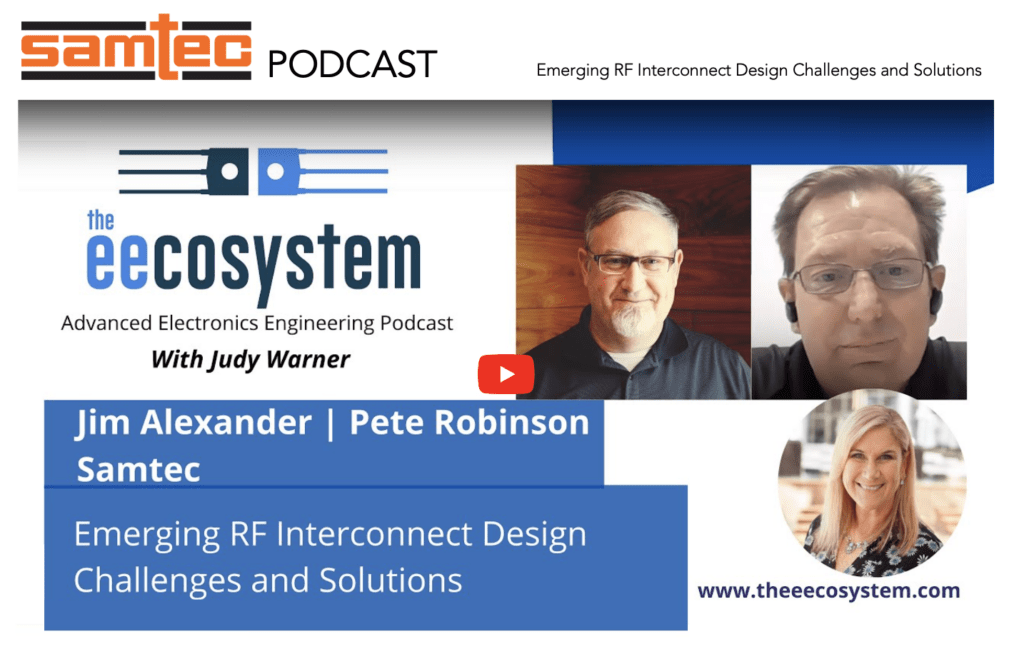
Samtec’s Jim Alexander and Pete Robinson recently spoke with Judy Warner on The EEcosystem. The conversation, recorded as a podcast, discusses how increasing frequencies and shrinking footprints impact RF connectors and PCBs. They also discuss new design considerations and solutions.
Here’s a link to that podcast (it’s free — no registration, no strings attached)
While it doesn’t replace the podcast, below are a few comments, ideas, strategies, and observations that are covered in the episode …
- “RF seems to be seeping into everything.” It’s becoming ubiquitous because of evolving application needs, like IoT, automotive, and radar. Having said that, engineers are not always familiar with RF.
- Why is this happening? Packages are on smaller footprints. Yet, the need for higher frequencies and more components on this smaller piece of real estate is increasing.
- Higher frequencies mean shorter wavelengths, and signal paths and launches are much smaller. This greatly increases the need for precise connector alignment for optimum performance. An example discussed is center pin alignment on compression mount RF connectors.
- The idea of RF becoming ubiquitous can be especially pervasive for new engineers.
- Many new engineers think they’re only going to be doing coding, but that’s not necessarily the case.
- Shorter wavelengths, higher power, and the need for signals to go further lead requires more robust designs, which are more thoroughly and thoughtfully developed.
- Test board connectors used to be soldered, but now many designers need to move to a compression-style connection to achieve high frequency. As a result, Samtec has incorporated visual alignment queues into our RF connectors to help solve the need for precise connector alignment.
- All of this is really an interplay of mechanics and how it plays with the electrical path.
- As electronics continue to shrink, we sometimes see a disconnect between mechanical and electrical engineering. Meaning, historically, connectors were primarily designed by mechanical engineers. Now electrical engineers are really driving the requirements and the mechanical guys are then trying to fit that into the package with which they have to work.
How the development cycle has evolved:
- With the “old school cycle,” most parameters were defined — written in black and white — with defined interfaces and requirements based on mil standards, that were written into many specs.
- Now it’s often a function of industry, as needs and development are moving faster and faster.
- The government eventually didn’t have the resources to stay at the forefront of development to drive the latest technology. “Government entities” (military, or standards groups for example) are now adopting the bigger picture of what’s been happening within the industry.
- Now, government entities are trying to go back and “define” these industry developments and control them with iterative releases of standards.
- This is also what’s really allowed the industry to evolve more into Open Systems developments.

Specific design considerations or themes we’re (i.e., Samtec) seeing for RF connectors:
- High frequencies and the challenges that brings to the table for RF connectors.
- Multi-channel ganged connectors.
- Custom connectors for specific channel spacing, or for specific array/radar/comms antenna applications.
OK, that’s enough. If you’ve taken the time to read this far, then you need to stop reading and listen to the podcast. If you have any questions, please contact the RF Group.
And here are other RF-related articles that may be of interest to you:



Leave a Reply